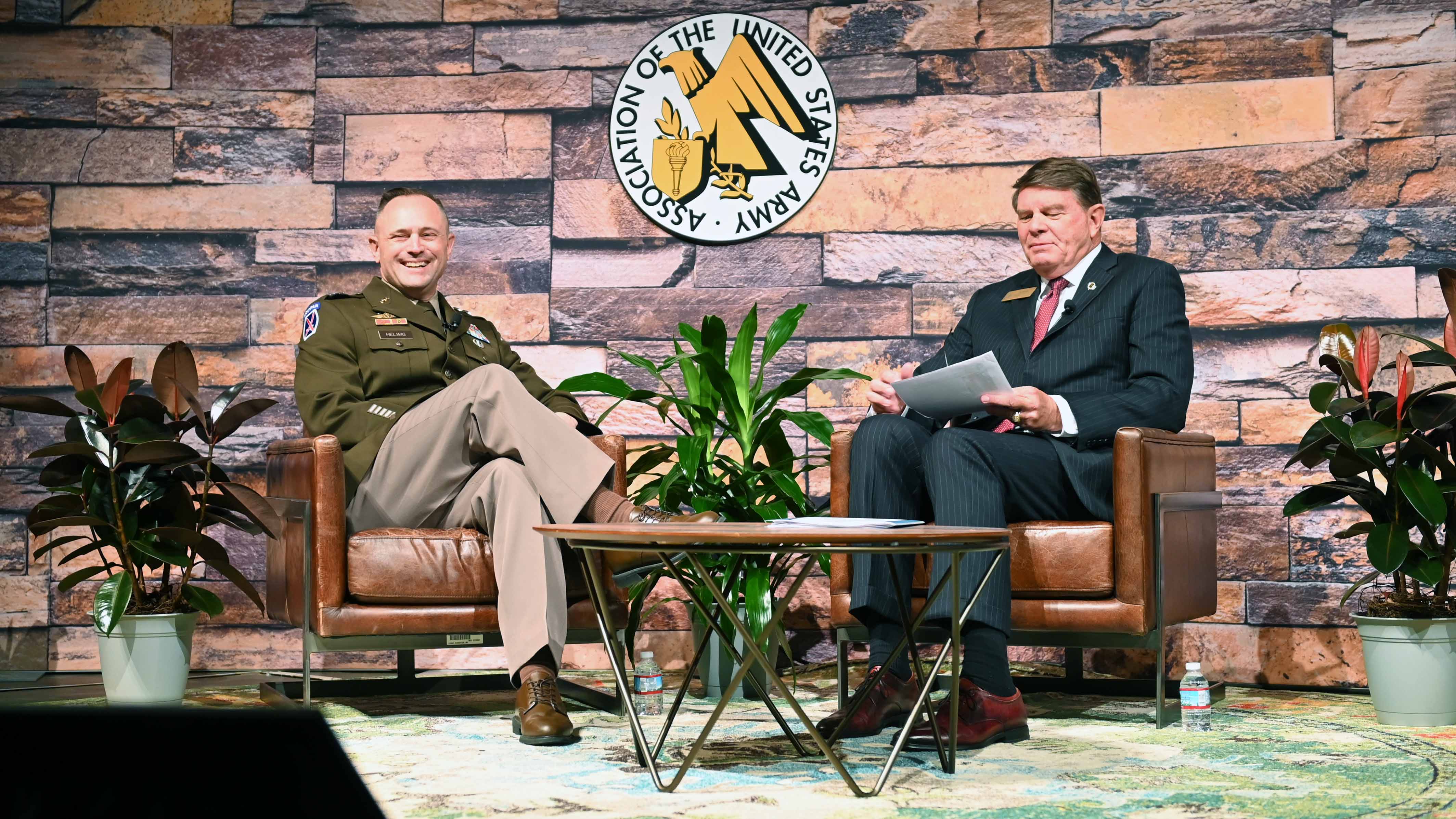Practice ‘Essential’ to Sustainment in Indo-Pacific
Practice ‘Essential’ to Sustainment in Indo-Pacific

Faced with increasing competition in the vast Indo-Pacific, the Army must continually train and rehearse its sustainment and logistics capabilities, a senior leader in the region said.
Speaking March 28 at the Association of the U.S. Army’s Global Force Symposium and Exposition in Huntsville, Alabama, Maj. Gen. Jered Helwig, commander of the 8th Theater Sustainment Command in Hawaii, said logistics is a warfighting function. “It has to be trained to be sustained and to be improved upon, and it really has to build that network in competition to be effective in crisis and conflict,” he said.
If conflict breaks out in the region, the Army would be the linchpin service, providing critical theater setting and logistics for the joint force, he said. “We have to rehearse sustainment to be that linchpin,” he said. “It’s just so essential.”
A key way the Army is practicing logistics and sustainment is through Operation Pathways, a series of exercises with allies and partners in the Indo-Pacific. Training in the region allows the Army to “build those capabilities forward, to build the endurance we need, to have locations to flex to if we need it,” Helwig said.
This year, the Army will be “all over” the region, Helwig said, from “Australia to Papua New Guinea, Indonesia to the second island chain, Palau, the Philippines, and up to Japan.”
The exercises allow the Army to test its systems and use its theater distribution centers, which allow the service to “receive, store and issue a variety of sustainment and place equipment that we need to really support the joint force,” Helwig said.
Another critical capability the Army must hone is intratheater lift, including the service’s watercraft fleet. “In our theater, there is a lot of water … so the ability to move at the speed required really requires a new look at how we build that intratheater lift,” he said.
The vast distances in the Indo-Pacific pose unique challenges, especially when it comes to making sure the right equipment gets to the right place at the right time, Helwig said. “In our theater, with the distances we have to travel and the paucity of locations that we have, … if I make a mistake or if we’re late, the time it takes to recover from that is days and weeks, not hours, like many of us are used to in a place like Afghanistan or Iraq, or even Europe to some extent,” he said.
Looking ahead, the Army is now honing its relationships with partners and allies. As an example, the Army is working with its Australian counterparts to “move past interoperability to even interchangeability,” Helwig said. One way to do that is to work together to share parts and maintenance and figuring out how to make it all work together, he said. “How can we build a capability that’s common so that things like maintenance and parts availability don’t become an issue in the future?” Helwig said.
The service also is working to further integrate Army National Guard and Army Reserve soldiers in its training events in the region. “We would not be able to do what we do without our Reserve and National Guard,” Helwig said. “There are huge portions of capability that reside almost exclusively in the National Guard and Reserve. We have to train that just like we train everything else.”

